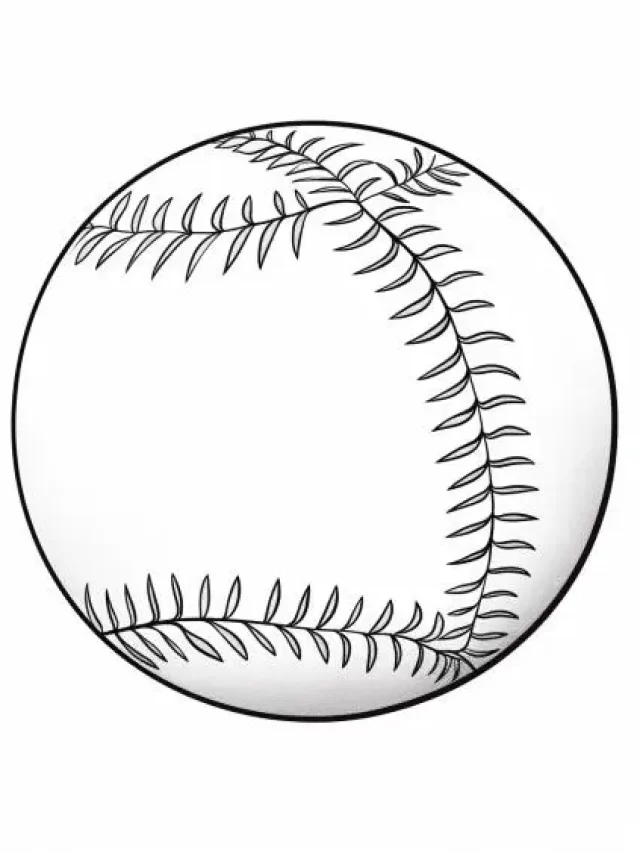
Baseball is a game full of statistics and terms that can sometimes be confusing. One such term is “save.” You may have heard commentators mention it during games or seen it in box scores, but what exactly does it mean and what criteria must a pitcher meet to be credited with a save?
In this article, we will delve into the world of saves in baseball and uncover the guidelines and rules that define this important statistic. From its origins to its significance in evaluating relief pitchers, we’ll explore the fascinating world of saves in baseball.
Key Takeaways:
- A save is a statistic awarded to a pitcher who finishes a game for the winning team under specific circumstances.
- The criteria for a save include entering the game in the ninth inning with a lead of three runs or fewer and pitching one inning without losing the lead.
- The save statistic was created by journalist Jerome Holtzman in 1959 and became an official MLB statistic in 1969.
- Mariano Rivera holds the record for the most career saves with 652.
History of the Save Statistic in Baseball
The term “save” has been used since 1952 to describe a relief pitcher’s role in preserving a lead, but it wasn’t until 1969 that it became an official statistic. Prior to that, executives and statisticians recognized the need to credit relief pitchers who finished winning games but weren’t credited with the win.
Journalist Jerome Holtzman played a crucial role in the development of the save statistic. In 1960, he created a formula that included more criteria for saves, giving a clearer definition to the term. This formula was eventually adopted by Major League Baseball in 1969, making saves an official statistic. Since then, the save statistic has been an integral part of evaluating the performance of relief pitchers.
When it comes to the all-time saves record, one name stands at the top: Mariano Rivera. Rivera, a legendary closer for the New York Yankees, recorded an astounding 652 regular-season saves throughout his career. His dominance on the mound solidified his place in baseball history and made him the benchmark for future closers.
Criteria for a Save in Baseball
To earn a save in baseball, a relief pitcher must meet specific criteria outlined in Rule 9.19 of the Official Rules of Major League Baseball. These criteria serve as the requirements and conditions that determine whether a pitcher is eligible for a save. The definition of a save in baseball is a crucial aspect of understanding the role and impact of relief pitchers.
The criteria for a save in baseball are as follows:
- Being the finishing pitcher in a game won by the team
- Not being the winning pitcher
- Pitching at least ⅓ of an inning
- Satisfying one of the following conditions:
1. Entering the game with a lead of three runs or fewer and pitching for at least one inning.
2. Entering the game with the potential tying run on base, at bat, or on deck.
3. Pitching for at least three innings.
These criteria ensure that a save is only credited to a relief pitcher who significantly contributes to preserving a win for their team. By meeting these requirements, pitchers demonstrate their ability to handle high-pressure situations and secure victories.
The save statistic in baseball reflects both the contributions of individual pitchers and the tactical decisions made by managers. It is an important measure of a reliever’s effectiveness and role within the game. Understanding the criteria for a save provides valuable insight into the significance of this statistic and its impact on the evaluation of relief pitchers.
Notable Saves in Baseball History
Throughout baseball history, there have been several notable saves that have stood out. These historic moments have left a lasting impact and are remembered as memorable save moments. Let’s take a look at some of these remarkable saves:
- Bill Singer: In 1969, Bill Singer was credited with the first official save. This significant moment marked the beginning of the save statistic becoming a recognized measure of a relief pitcher’s performance.
- Frank Linzy: Also in 1969, Frank Linzy accomplished a rare feat by recording two saves in a single day. His exceptional performance showcased his ability to consistently secure victories for his team.
- Stan Williams: In 1970, Stan Williams earned a save without even facing a batter. His swift execution and strategic pitching contributed to a memorable save moment.
These extraordinary saves exemplify the skill and determination of the pitchers who made them. Their contributions to the game will always be remembered as historic saves in baseball history.
“Baseball is a game of inches, and the slightest change in a pitcher’s delivery can make all the difference between a save and a blown save.” – Baseball Analyst

But the list of memorable saves doesn’t end there. Here are a few more notable save moments that have captivated fans:
- Joaquín Benoit: In 2002, Joaquín Benoit showcased his resilience and stamina by pitching an impressive seven-inning save. This remarkable performance demonstrated his ability to dominate the opposing batters and secure a victory for his team.
- Wes Littleton: In 2007, Wes Littleton achieved a unique save with the largest winning margin in baseball history. His exceptional pitching performance helped his team secure an astounding victory.
- Madison Bumgarner: In the 2014 World Series, Madison Bumgarner delivered a legendary five-inning save, the longest in World Series history. His masterful pitching shut down the opposing team, solidifying his place in baseball history.
These memorable save moments remind us of the incredible skill, strategy, and determination displayed by relief pitchers in high-pressure situations. They continue to inspire and captivate baseball fans around the world.
Usage and Interpretation of Saves in Baseball
In baseball statistics, the save is a crucial measure that indicates the successful preservation of a lead by a relief pitcher until the end of the game. It is particularly important when evaluating the performance of relief pitchers, especially those in the closer role.
The save statistic serves as a valuable tool for understanding a pitcher’s ability to secure victories for their team in crucial moments. It recognizes the role of relievers in protecting leads and ensuring the team’s success.
However, it’s worth noting that the save statistic has its critics. Some argue that it might not always accurately reflect a pitcher’s effectiveness at preventing runs or safeguarding leads. They contend that a pitcher’s performance should be evaluated based on metrics that consider other factors beyond the save statistic alone.
The closer role in baseball has evolved over time. Historically, closers would often pitch multiple innings to secure a save. However, in contemporary baseball, the typical approach involves closers pitching for only one inning in save situations. This adaptation reflects a shift in strategy and the recognition of pitchers’ specialization in certain game scenarios.
To better understand the nuances of the save statistic and its interpretation, let’s explore some of its practical applications and considerations:
1. Usage of Saves in Baseball
Coaches and managers in baseball rely on the save statistic to make crucial decisions during games. It informs their strategy for utilizing relief pitchers effectively, ensuring that the right pitchers are in the game to secure a victory. Saves can directly influence decisions such as whether to rest a closer for an upcoming game or extend their workload for high-stakes moments.
Moreover, the usage of saves contributes to the overall narrative of a game and adds drama and excitement for fans. The anticipation of a closer entering the game to protect a narrow lead creates a thrilling atmosphere and intensifies the spectator experience.
2. Interpreting the Save Statistic
“The save is a valuable statistic that highlights the ability of a relief pitcher to finish games and maintain leads. However, it should be considered alongside other critical performance metrics to gain a comprehensive understanding of a pitcher’s impact on the game.” – Baseball Analyst
Interpreting the save statistic requires considering its limitations and context. Evaluating a pitcher solely based on their save count may not provide a complete picture of their effectiveness. Additional statistics such as earned run average (ERA), strikeout rate, and even advanced analytics like fielding independent pitching (FIP) or win probability added (WPA) offer more comprehensive insights into a pitcher’s performance.
By analyzing a combination of statistics, coaches, analysts, and fans can gain a deeper understanding of the impact and value of relief pitchers beyond the save statistic.

As the game of baseball continues to evolve, so does the interpretation and evaluation of statistics, including the save. It’s essential to recognize the save statistic’s significance while appreciating its limitations and considering a comprehensive understanding of relief pitcher performance.
Related Statistics and Terms
In addition to the save statistic, there are several related statistics and terms that are commonly used in baseball. These include save percentage, hold statistic, blown save, and save opportunity.
Save Percentage: Save percentage is a statistical measure that indicates the effectiveness of a relief pitcher in converting save opportunities. It is calculated by dividing the total number of saves by the total number of save opportunities and multiplying by 100.
Hold Statistic: The hold statistic is not officially recognized by Major League Baseball, but it is commonly used to credit relief pitchers for successful appearances in games where they do not earn a save. A hold is awarded to a pitcher who enters the game in a save situation and maintains the lead without finishing the game.
Blown Save: A blown save occurs when a relief pitcher, who enters the game with a save opportunity, allows the tying run or more to score. It is a negative statistic for the pitcher and indicates a missed opportunity to secure a save.
Save Opportunity: Save opportunities refer to situations in which a relief pitcher enters the game with the potential to earn a save. This typically happens when the pitcher enters the game in the ninth inning with a lead of three runs or fewer. Save opportunities are crucial moments for relievers to showcase their ability to preserve a victory for their team.
Understanding these related statistics and terms provides a more comprehensive view of a relief pitcher’s performance and impact on the game. Whether it’s the save percentage, hold statistic, blown save, or save opportunity, each aspect contributes to the evaluation of a pitcher’s effectiveness in high-pressure situations.
Conclusion
The save statistic in baseball is a crucial measure of a relief pitcher’s performance and effectiveness in securing a victory for their team. By meeting specific criteria, pitchers earn saves and contribute to their team’s success. Although the save statistic has its critics, it remains a valuable tool for evaluating relief pitchers.
Since its official recognition in 1969, the save statistic has served as a benchmark for evaluating relievers’ ability to maintain a lead until the end of a game. Mariano Rivera, a legendary pitcher, holds the all-time record with an impressive 652 saves over his illustrious career.
While the save statistic has its limitations and may not fully capture a pitcher’s overall effectiveness, it provides a standardized measure for evaluating their performance. By considering factors such as the number of saves, save opportunities, and save percentage, baseball analysts can gain insights into a relief pitcher’s impact on their team’s success.
In conclusion, the save statistic plays a vital role in baseball, allowing teams to assess the performance of their relief pitchers and providing a quantifiable measure of their ability to secure victories. Despite its limitations, the save statistic remains an integral part of the game and will continue to be used in evaluating the contributions of relief pitchers in the years to come.
Source Links
- https://en.wikipedia.org/wiki/Save_(baseball)
- https://www.nations-baseball.com/save-in-baseball/
- https://belvidereyouthbaseball.com/breaking-down-the-definition-of-save-in-baseball-what-you-need-to-know/

Meet Daniel Anderson, the heart and soul behind Baseball Pro Picks. At 49, Daniel’s life has revolved around baseball, a passion that’s as strong today as it was when he first fell in love with the game. Living in the USA, Daniel has dedicated countless hours to watching, analyzing, and understanding every pitch, hit, and home run, making almost no game missed. His deep-rooted love for the sport is matched only by his commitment to sharing insightful, expert analysis with fellow baseball enthusiasts. With decades of experience and a keen eye for the game’s nuances, Daniel brings a unique perspective that enriches Baseball Pro Picks. Trust Daniel to guide you through the intricacies of baseball with the authority and trustworthiness of a true aficionado.












